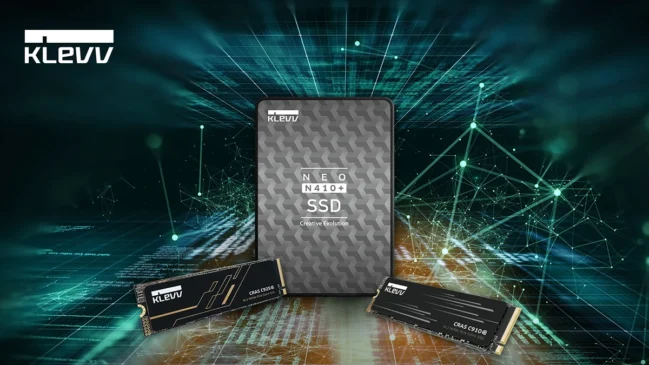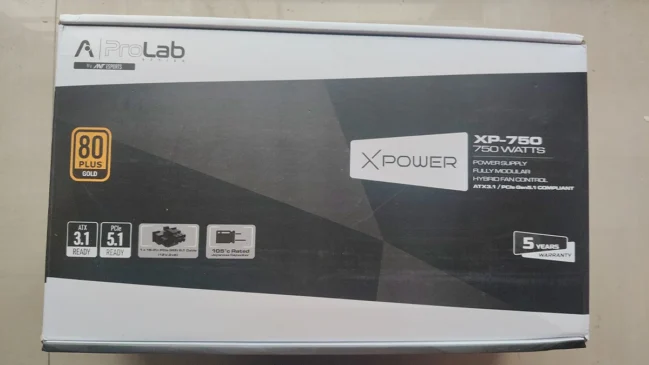
Press Release
SANTA CLARA, Calif.—Sept. 1, 2020—NVIDIA today unveiled its GeForce RTX™ 30 Series GPUs, powered by the NVIDIA Ampere architecture, which delivers the greatest-ever generational leap in GeForce® history.
Smashing performance records, the GeForce RTX 3090, 3080 and 3070 GPUs offer up to 2x the performance and 1.9x the power efficiency over the previous Turing-based generation. The GPUs take advantage of the second generation of NVIDIA RTX™ — the world’s most powerful PC gaming platform — to provide unprecedented levels of real-time ray tracing and AI gaming.
The RTX 30 Series was unveiled during a virtual launch event by NVIDIA founder and CEO Jensen Huang, who also announced that Fortnite, the pop culture gaming phenomenon, is turning on RTX real-time ray tracing, adding four ray-traced features for a more immersive gaming experience, including reflections, shadows, global illumination and ambient occlusion.
Huang additionally revealed powerful new tools for gamers, including NVIDIA Reflex, which makes competitive gamers quicker; Omniverse Machinima, for video game storytelling using real-time computer graphics engines; and NVIDIA Broadcast, which harnesses AI to turn any room into a home broadcast studio.
“Today’s launch of NVIDIA Ampere GPUs is a giant step into the future,” said Huang. “The work of thousands of engineering years, the GeForce RTX 30 Series delivers our greatest generational leap ever. NVIDIA RTX fuses programmable shading, ray tracing and AI for developers to create entirely new worlds. Twenty years from now, we’ll look back and realize that the future of gaming started here.”
Marvels of NVIDIA Ampere Architecture – 2nd Generation RTX
Enabling the blistering performance of the new RTX 30 Series GPUs and the NVIDIA Ampere architecture are cutting-edge technologies and over two decades of graphics R&D, including:
- New streaming multiprocessors: The building block for the world’s fastest, most efficient GPU, delivering 2x the FP32 throughput of the previous generation, and 30 Shader-TFLOPS of processing power.
- Second-gen RT Cores: New dedicated RT Cores deliver 2x the throughput of the previous generation, plus concurrent ray tracing and shading and compute, with 58 RT-TFLOPS of processing power.
- Third-gen Tensor Cores: New dedicated Tensor Cores, with up to 2x the throughput of the previous generation, making it faster and more efficient to run AI-powered technologies, like NVIDIA DLSS, and 238 Tensor-TFLOPS of processing power.
- NVIDIA RTX IO: Enables rapid GPU-based loading and game asset decompression, accelerating input/output performance by up to 100x compared with hard drives and traditional storage APIs. In conjunction with Microsoft’s new DirectStorage for Windows API,(1) RTX IO offloads dozens of CPU cores’ worth of work to the RTX GPU, improving frame rates and enabling near-instantaneous game loading.
- World’s fastest graphics memory: NVIDIA has worked with Micron to create the world’s fastest discrete graphics memory for the RTX 30 Series, GDDR6X.(2) It provides data speeds of close to 1TB/s system memory bandwidth for graphics card applications, maximizing game and app performance.
- Next-gen process technology: New 8N NVIDIA custom process from Samsung, which allows for higher transistor density and more efficiency.
RTX Comes to Fortnite, Call of Duty: Black Ops Cold War
Pop culture phenomenon Fortnite is the latest blockbuster game to turn RTX On, joining Call of Duty: Black Ops Cold War and a large group of AAA titles, such as Cyberpunk 2077, Dying Light 2 and Watch Dogs: Legion.
Among other titles already shipping with ray-tracing support are Control, Minecraft with RTX Beta for Windows 10, and Wolfenstein: Youngblood. Additionally, ray tracing is supported in industry-standard APIs, including Microsoft DirectX Raytracing and Vulkan, as well as in the game engines used by developers to create games, including Unreal Engine, Unity, Frostbite, id Tech, Northlight, Luminous Engine, 4A Engine, and more.
DLSS: AI-Powered Gaming Acceleration
NVIDIA DLSS, one of the biggest graphics breakthroughs of the past decade, uses the deep learning neural network powered by RTX Tensor Cores. When enabled, DLSS — which is supported exclusively on GeForce RTX GPUs — improves performance in titles such as Control, Minecraft with RTX for Windows 10 and Death Stranding, while generating images that are comparable to native resolution. DLSS will be heading to Boundary, Bright Memory Infinite, Call of Duty: Black Ops Cold War, Cyberpunk 2077, Fortnite, Ready or Not, Scavengers and Watch Dogs: Legion. For those with more powerful PC configurations, a new Ultra Performance mode enables DLSS to run up to 8K.
New Ways to Play
NVIDIA also announced three new technologies designed for enhancing the experiences of gamers, broadcasters, esports professionals and creators:
- NVIDIA Reflex: Become Instantly More Competitive. Gamers strive for the lowest possible latency in competitive games because it allows the PC to respond faster to their inputs, enabling them to play with greater precision. NVIDIA Reflex is a new suite of technologies that optimize and measure system latency. Among these are NVIDIA Reflex Low-Latency Mode, a technology being integrated into popular esports games such as Apex Legends, Call of Duty: Warzone, Fortnite and Valorant that reduces latency by up to 50 percent, and NVIDIA Reflex Latency Analyzer, which detects input coming from the mouse and then measures the time it takes for the resulting pixels (for example, a gun muzzle flash) to change on screen. Reflex Latency Analyzer is integrated into new 360Hz NVIDIA G-SYNC® Esports displays arriving this fall from Acer, Alienware, ASUS and MSI and supported by top esports peripherals from ASUS, Logitech, Razer and SteelSeries. Measuring system latency has previously been virtually impossible for gamers to do, requiring over $7,000 in specialized high-speed cameras and equipment.
- NVIDIA Broadcast: Stream Like a Pro. The world’s 20 million live streamers can turn their home into a broadcast studio with NVIDIA Broadcast, a universal plugin that enhances the quality of microphones and webcams with RTX-accelerated AI effects, such as audio noise removal, virtual background effects, and webcam auto frame.
- NVIDIA Omniverse Machinima: Enriching a New Art Form. Modern gaming continues to extend the storytelling art genre, in which game assets are used to create cinematic masterpieces. Omniverse Machinima makes such work easy, providing a path-traced viewer tool and engine designed for physical accuracy, simulating light, physics, materials, and AI. Users can take assets from supported games, and use their web camera and AI to create characters, add high-fidelity physics and face and voice animation, and publish film-quality cinematics using the rendering power of their RTX 30 Series GPU. Sign up for notification when early access opens.
Introducing: GeForce RTX 3080, RTX 3070, RTX 3090 Founders Edition
- GeForce RTX 3080 —Starting at INR 71,000, the RTX 3080 is the ultimate gaming GPU — up to 2x faster than the RTX 2080. Featuring 10GB of the new high-speed GDDR6X memory running at 19Gbps, the RTX 3080 can consistently deliver 60 frames per second for 4K resolution gaming.
- GeForce RTX 3070 — Starting at INR 51,000, the RTX 3070 is faster than the RTX 2080 Ti at less than half the price, and on average is 60 percent faster than the original RTX 2070. It is equipped with 8GB of GDDR6 memory, hitting the sweet spot of performance for games running at 4K and 1440p resolutions.
- GeForce RTX 3090 — At the top of the stack is the RTX 3090, priced at INR 1,52,000 and referred to as the “BFGPU” — Big Ferocious GPU. It even comes with a silencer — a three-slot, dual-axial, flow-through design that is up to 10x quieter than the TITAN RTX and keeps the GPU up to 30 degrees C cooler. Its 24GB of GDDR6X memory can tackle the toughest AI algorithms and feed massive, content creation workloads. The RTX 3090 is up to 50 percent faster than the current ultimate PC graphics card, TITAN RTX, enabling gamers to experience 60 fps in 8K resolution across many top games.
The new cards feature several world firsts, including:
- Dual-Axial, Flow-Through Thermal Solution — Up to 2x more cooling performance, with a stunning unibody design. Gamers and creators will be able to enjoy unrivaled performance while their GPUs simultaneously run cooler and quieter than ever.
- Exquisite Mechanical and Electrical Design — A stronger mechanical structure — with a new low-profile leaf spring along with a new 12-pin power connector — allows more space for components and cooling, and is compatible with 8-pin connectors in existing power supplies, with an included adapter.
- HDMI 2.1 — The increased bandwidth provided by HDMI 2.1 allows, for the first time, a single cable connection to 8K HDR TVs for ultra-high-resolution gaming.
- AV1 Decode — First discrete GPUs with support for the new AV1 codec, enabling gamers to watch up to 8K HDR internet video using as much as 50 percent less bandwidth.
Editors Note: We will be doing an architectural deep dive with the RTX 30 Series GPU’s in a few days as more details come out. Keep an eye out!








